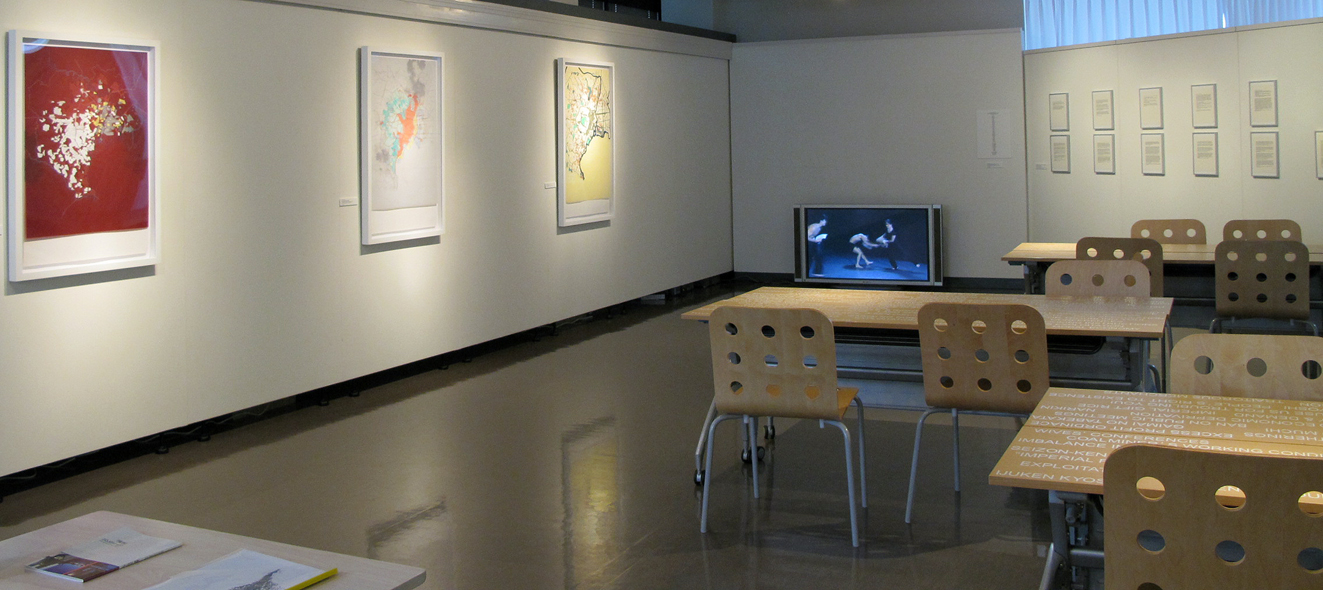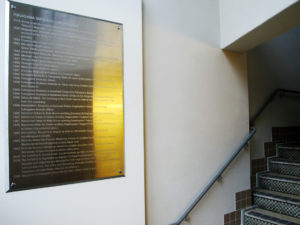 Fukagawa Shokudo Chronology; Etching on steel plate, 120 x 84,5 x 2 cm
Fukagawa Shokudo Chronology; Etching on steel plate, 120 x 84,5 x 2 cm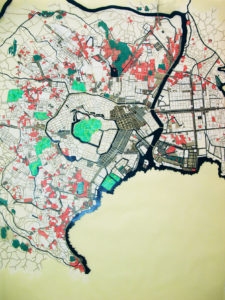 Edo Tokyo; Micro pigment ink & oil on vellum and paper, 110 x 70 cm
Edo Tokyo; Micro pigment ink & oil on vellum and paper, 110 x 70 cm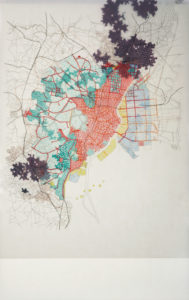 Tokyo Urban Planning Map after 1923 Great Kanto Earthquake; Micro pigment ink & oil on vellum and paper, 100 x 63 cm
Tokyo Urban Planning Map after 1923 Great Kanto Earthquake; Micro pigment ink & oil on vellum and paper, 100 x 63 cm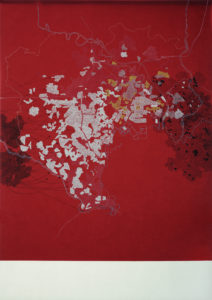 US Strategic Bombing Survey of Tokyo 1944-1945; Micro pigment ink & oil on vellum and paper, 90 x 64 cm
US Strategic Bombing Survey of Tokyo 1944-1945; Micro pigment ink & oil on vellum and paper, 90 x 64 cm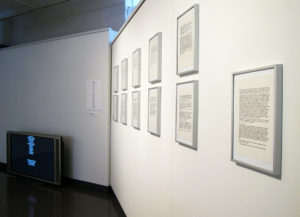 Kome Sodo - from wives' conferences to class conflicts and 1918 mass protests; 12 Prints (Ink on arches paper), 26 x 19 cm (each)
Kome Sodo - from wives' conferences to class conflicts and 1918 mass protests; 12 Prints (Ink on arches paper), 26 x 19 cm (each)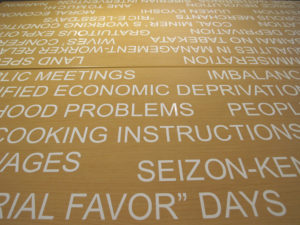 Komo Sodo - Wordplay; Vinyl decal on tables, Variable size
Komo Sodo - Wordplay; Vinyl decal on tables, Variable size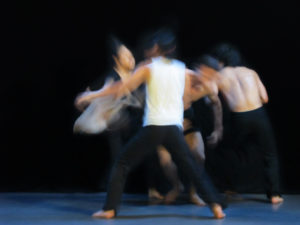 well-side gatherings: rice stories, the rioters, the speakers and the voyeurs; Single channel video, 8'24'' (screenshot)
well-side gatherings: rice stories, the rioters, the speakers and the voyeurs; Single channel video, 8'24'' (screenshot)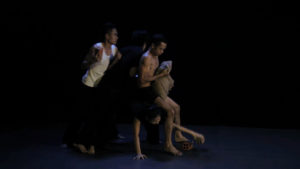 well-side gatherings: rice stories, the rioters, the speakers and the voyeurs; Single channel video, 8'24'' (screenshot)
well-side gatherings: rice stories, the rioters, the speakers and the voyeurs; Single channel video, 8'24'' (screenshot)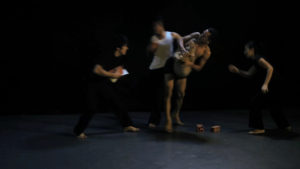 well-side gatherings: rice stories, the rioters, the speakers and the voyeurs; Single channel video, 8'24'' (screenshot)
well-side gatherings: rice stories, the rioters, the speakers and the voyeurs; Single channel video, 8'24'' (screenshot)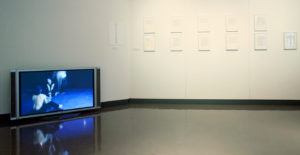 Installation view
Installation view 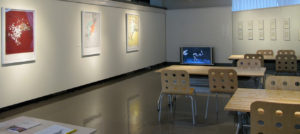 Installation view
Installation view
Examining the historical backdrop of modern Japan from the Taisho to Showa periods, particularly around the time Fukagawa Shokudo was established (known as ‘Fukagawa Tokyo Modan Kan’ in the present day), this site-specific installation initially sought to understand the frantic changes in Tokyo’s urban landscape after the 1923 Great Kanto earthquake and the 1945 Tokyo air raids, interweaving specific historical events with spatial and social transformations to investigate the complexity of Japan’s culture, society and history. Intrigued by the historical significance of Fukagawa Shokudo as one of the last remaining examples of early Showa modern architecture and the only surviving building in a series of public dining rooms established by Tokyo City, following the 1918 Kome Sodo and 1923 Great Kanto earthquake, Chung began to research and compile the building’s chronology. During her research, she came across a number of documents that recorded the accounts of 1918 Kome Sodo (rice riots); among them an analogy by Michael Lawrence Lewis entitled Rioters and Citizens: Mass Protest in Imperial Japan. Fascinated with these massive protests that erupted throughout Japan from July to September 1918, Chung examined Kome Sodo’s causes & effects in order to draw the full implication of this social uprising as a ‘collective demand for expanded democratic rights’.
While Fukagawa Shokudo chronology is engraved on a large steel plate, the map of Tokyo is re-rendered in three different periods [based on the original map of Edo Tokyo, Tokyo urban planning map after the 1923 Great Kanto earthquake, and the US strategic bombing survey of Tokyo 1944-1945.] To recapture the powerful spirit of Kome Sodo, Chung decided to employ the language of theater and contemporary dance. The video work combines intense body movements with a voice reading abstract data of Kome Sodo. Chung created a video and text-based installation work that reflects on a specific historical event at the turn of the century to reference current protests broken out globally.
Chung’s video work in this installation is later developed into a contemporary dance & theater piece, based on her in-depth research of Japan’s modern history at the time of the Meiji Restoration, Industrial Revolution and Taisho Democracy. This work critically and analytically examines Japan’s ‘discovery of individuality’ [or ‘politics of the people’] while struggling to transform its traditional society into an industrial one. From people’s struggle and frustration with rice shortages, unjustified economic deprivation and factory working conditions to social uprisings, the work attempts to recapture this powerful transitional period and its relevance in comparison with contemporary society, well beyond the context of Japan.

